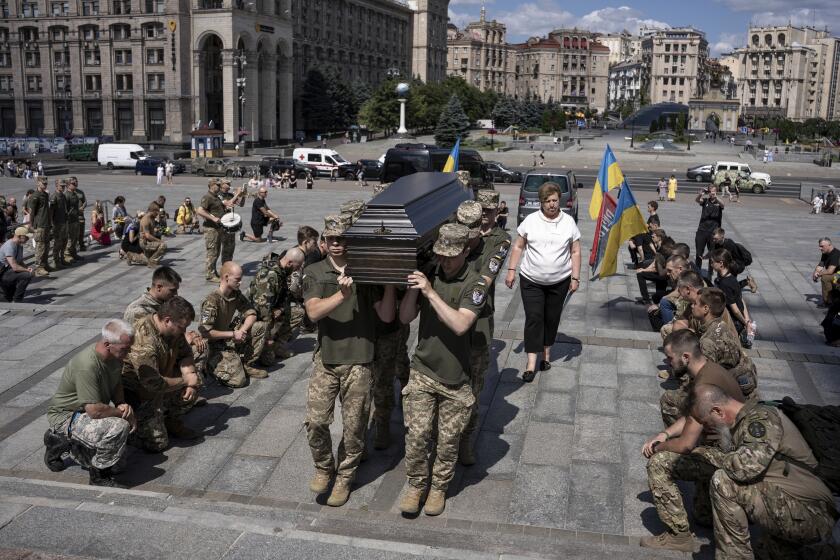Behind the Kidnaping of Children for Their Organs
The recent mob attacks in Guatemala on two American women suspected of kidnaping children for organ transplants may be part of a right- wing strategy to create a climate of instability hostile to human-rights monitors. In the more serious of the two incidents, June D. Weinstock, an environmental writer from Fairbanks, Alaska, was engulfed by an enraged mob in San Cristobal Verapaz, in the Mayan Highlands, after she was seen caressing a child whose mother reported him missing immediately afterward. Weinstock was stripped, stoned, stabbed repeatedly and beaten unconscious by her assailants, who were egged on by state road workers and unidentified outsiders. Although her condition has been upgraded from comatose to “in stupor,” she probably will not recover fully.
The assaults on the women and other foreigners tap into indigenous fears that are at least 500 years old. When the Spanish conquistadors invaded the Guatemalan Highlands in the 16th Century, Mayan mothers believed the men with pale complexions and blond beards were anemic, and required the blood of brown-skinned infants to become well.
These ancient fears have resurfaced with the rise of a baby-trafficking contraband that accounts for the disappearance of six children a day, according to Guatemala’s Public Ministry. Most of these abducted children, who range from newborns to primary schoolers, will be hidden away in “fattening houses” before they are flown to illicit adoption agencies in the United States and Europe. Atty. Gen. Telesforo Guerra Cahn reports 20 kidnaping rings and at least 65 fattening houses operating in Guatemala.
The baby trade is so lucrative--illegal adoptions bring as much as $10,000 a head--that high government officials are known to take part in it. One of the largest rings is allegedly headed by a top government official. Attempts to prosecute him have failed because of his parliamentary immunity, not to mention his influence over the court system and its judges.
In recent weeks, this multimillion- dollar traffic has taken a macabre twist, as rumors have resurfaced that some kidnaped babies are being flown abroad for their organs. Like the medieval blood libels in Europe that accused Jews of stealing Christian babies for satanic rituals, the organ-transplant hysteria has taken on a life of its own. Unlike the medieval blood libels, which were fanned by zealous anti-Semite clerics, there is growing evidence that the organ-transplant rumors may have a basis in fact.
In its March 21 issue, Mexico’s Proceso, which has tracked the baby-trafficking story for months, interviewed Eric Sottas, president of the Geneva-based World Organization Against Torture, who confirmed the existence of international rings that kidnap children, “not only for illegal adoptions, pornographic activities and child prostitution, but for the purpose of trafficking in organs.”
The “Sottas Report,” elaborated over a three-year period with the collaboration of 200 human-rights agencies, was presented March 8 at a conference of transplant experts in Basil, Switzerland. Among many other horrors, the report lists 17 clinics in Tijuana and Juarez, on Mexico’s U.S. border, that perform sophisticated transplants of kidneys and corneal tissues from kidnaped children to wealthy Europeans and North Americans who pay top prices for the operations, no questions asked. The Latin American countries listed as confirmed traffickers in child organs are Brazil, Argentina, Peru, Honduras, Colombia and Mexico. The chief beneficiaries, apart from North Americans, are reported to be Swiss, German and, above all, Italian buyers.
In an earlier report to the United Nations, Sottas named Guatemala, Haiti and Brazil as three countries in which street children are kidnaped for their organs. Most of these children are not heard from again.
Whether or not the reports of organ transplants in Guatemala are proved true, their usefulness as a political tool against foreigners is undeniable. In the attack on Melissa C. Larson in Santa Lucia Cotzumalguapa, on Guatemala’s southern lowlands, diplomatic sources reported two military intelligence officers inciting the crowds. A mob of several hundred set fire to the prison where Larson was being held in protective custody after townspeople accused her of complicity in the abduction of two children. Larson was freed 19 days later for lack of evidence.
Another factor in the attacks on foreigners could be the breakthrough in the latest round of peace talks in Mexico between the government and leftist guerrillas of the Guatemalan National Revolutionary Union. For the first time, human-rights violations were placed on the agenda for continuing negotiations in Norway in mid-May. On March 29, the Guatemalan government agreed to permit a 10-member United Nations verification team to inspect military bases and guerrilla camps and work with other human-rights agencies in Guatemala.
The military’s displeasure with this agreement is hardly surprising, as foreign observers accuse them of responsibility for as much as 95% of human-rights violations committed by all sides during Guatemala’s 33-year war of counter- insurgency. In past months, the army moved to tighten its reins on Ramiro de Leon Carpio’s presidency, pressuring him to dismiss his highly respected interior minister and human-rights specialist, Arnoldo Ortiz Moscoso, and his chief of police, Mario Rene Cifuentes, who headed the presidential human-rights commission. Ortiz and Cifuentes were replaced by hard-liners who support the army’s call for immunity from prosecution for all its past abuses of power.
By far the heaviest blow to Guatemala’s democratic apertura was the assassination, on April 1, of Epaminondas Gonzales Dubon, who had been president of Guatemala’s constitutional court for nearly a year. It was Gonzales who prevented former President Jorge Serrano Elias from abolishing the courts and the congress last May, and ruling the country by dictatorial decree. As a result of Gonzales’ murder and the continuing attacks on foreigners, the U.S. State Department has issued an advisory against travel to Guatemala, and 200 Peace Corps volunteers have been recalled from the countryside. President De Leon Carpio backed down, temporarily at least, from declaring a state of emergency that would include the suspension of constitutional guarantees--a move that would play further into the military’s apparent attempts to seal off the country against foreigners.
Meanwhile, the stories of abduction of children for illicit purposes continue to proliferate throughout Latin America. In Guatemala, the organ-trafficking rumors refuse to go away. Even if these claims continue to elude confirmation, the verifiable story of a Guatemalan supreme- court president who heads a child trafficking ring is sinister enough to cause stupor in Washington and European capitals, and to keep the pot boiling within Guatemala. As long as army generals and high-level officials continue to get away with systematic assassinations and infant abductions, the chances are slim that a U.N.-sponsored truth commission could get the job done, and pin down those responsible for the murder and disappearance of more than 100,000 Guatemalans in one of the hemisphere’s bloodiest and longest-lasting armed conflicts.*
More to Read
Start your day right
Sign up for Essential California for news, features and recommendations from the L.A. Times and beyond in your inbox six days a week.
You may occasionally receive promotional content from the Los Angeles Times.






